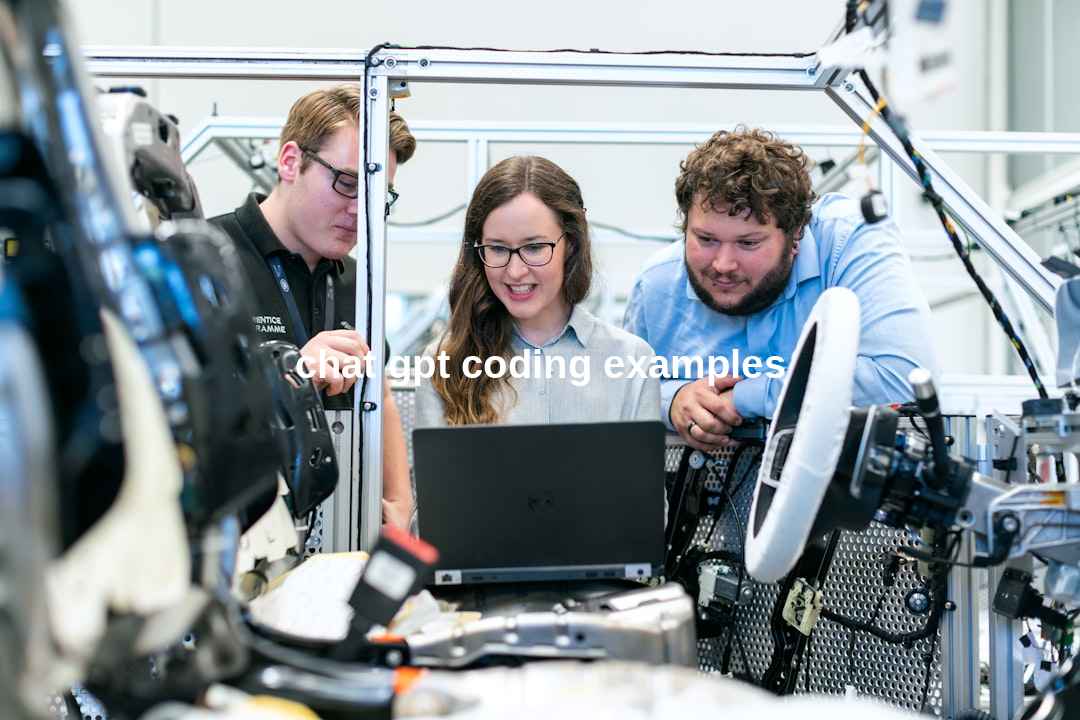**Introduction**
In an age where we’re always seeking more hours in the day, the advent of GPT-3 personal assistant technology is nothing short of revolutionary. Not only does it promise to enhance productivity, but it also brings the power of artificial intelligence into our daily interactions and decision-making processes in a more nuanced and personalized way. Let’s delve deeper into this exciting innovation and how it is transforming the landscape of personal assistance.
| Feature | Description | Benefit | Use Case Examples |
|---|---|---|---|
| Natural Language Processing | Ability to understand and respond in human language. | Intuitive interaction for users. | Scheduling, email management, information retrieval. |
| Learning Capability | GPT-3 learns from interactions to provide better responses over time. | Personalized experiences that improve with use. | Personalized recommendations, adaptive FAQs. |
| Integration Flexibility | Can be integrated with a wide range of apps and services. | Centralized assistance across platforms. | Home automation, financial tracking, business analytics. |
| Scalability | Handles an increasing amount of work without a hitch. | Supports growing personal and business needs. | Start-up scaling, customer support automation. |
The Evolution of AI Personal Assistants: From Siri to GPT-3
The journey of personal assistant AI is a fascinating tale of technological refinement and expansion. Siri may have started the craze, but the baton has been passed to more advanced iterations, leading us to the present crown jewel – the GPT-3 personal assistant.
The Genesis: Early Voice-Activated AI
When Apple introduced Siri in 2011, it marked the first time a wide audience encountered an AI they could converse with on their smartphones. Siri was groundbreaking, using voice recognition and a set of programmed responses to perform tasks. The convenience of setting reminders, sending messages, or getting directions by simply speaking to a phone felt like a leap into a science fiction reality. However, the limitations of Siri’s understanding and inability to handle complex requests or engage in meaningful conversations soon became apparent. She was smart, no doubt, but not quite the virtual assistant we dreamed of.
With each iteration of AI personal assistants, there has been notable progress. Google Assistant emerged with a stronger grasp on context, Amazon’s Alexa expanded the ecosystem with smart home integration, and Microsoft’s Cortana introduced productivity tools linked with Windows and Office software.
The Present: GPT-3’s Advanced Interaction
Today, we are witnessing the capabilities of OpenAI’s GPT-3, which has taken the concept of AI assistants to a previously unimaginable level. Unlike its predecessors, GPT-3 can process and generate human-like text, allowing it to understand context, remember past interactions, and even exhibit creativity. The applications of a GPT-3 personal assistant are vast, from writing and editing assistance to answering queries, and holding complex discussions on a wide array of topics.
Its underlying technology, based on deep learning and an enormous dataset, enables a flexibility and depth of conversation that outperforms what earlier generations of personal assistants could achieve. GPT-3’s text generation is sophisticated enough to draft emails, author creative content, code in several programming languages, and translate between languages, all while being fine-tuned to the user’s style and preference.
The evolution of AI personal assistants is a testament to how far we’ve come—transforming from simple voice command recognition into multifaceted tools that assist with a myriad of tasks, both mundane and complex. With the introduction of GPT-3, we’re not just witnessing an incremental upgrade; we’re stepping into a new era of AI companionship and assistance.
Harnessing GPT-3 for Business and Personal Efficiency

The exceptional language understanding and generation capabilities of GPT-3 personal assistants offer unparalleled opportunities to enhance efficiency for both individuals and businesses.
Automating Routine Tasks
GPT-3’s proficiency lies in its ability to automate tasks that previously required human intelligence and contextual understanding. For businesses, this can mean automating customer service inquiries, thus providing instant, accurate responses to customers 24/7. Personal users benefit from having an assistant that can manage emails, set appointments, and even organize travel plans efficiently.
Personalized Experience
Personalization is key to maintaining customer engagement and satisfaction. GPT-3 can deliver highly personalized content and responses by learning from interactions, which makes it invaluable for creating bespoke marketing campaigns or tailoring recommendations to an individual’s preferences.
Data Analysis and Decision Making
GPT-3’s ability to analyze large datasets with speed means companies can make data-driven decisions more swiftly. It sifts through data, extracts relevant information, and generates reports, making complex data interpretation more accessible to decision-makers.
—
Setting Up Your GPT-3 Personal Assistant: Technical Foundations
Implementing a GPT-3 personal assistant requires an understanding of API integration and system configuration to tailor the assistant’s capabilities to your specific needs.
Understanding GPT-3 API Integration
To utilize GPT-3, one must gain access to OpenAI’s API, which involves setting up an account, understanding the API keys, and ensuring compliance with usage policies. Integration allows your applications to communicate with GPT-3 effectively.
Developing a Customized Interface
Whether you’re a business owner or an individual, creating an interface that suits your interaction style is essential. This could encompass command-line tools, web interfaces, or even integrating with existing software systems for seamless interaction.
Ensuring Privacy and Security
With the powerful capabilities of GPT-3 comes the responsibility to ensure the privacy and security of the data processed. Encrypted communications, secure storage practices, and adherence to privacy regulations are critical components when setting up your assistant.
—
Extending GPT-3’s Capabilities with ChatGPT and Zapier Integration
The combination of GPT-3 personal assistant with tools like ChatGPT and Zapier opens the door to a vast ecosystem of automation and enhanced AI functionality.
Leveraging ChatGPT for Conversational AI
ChatGPT provides a conversational layer that makes interactions with GPT-3 natural and engaging. By utilizing ChatGPT, users can develop more sophisticated virtual agents capable of handling complex dialogues and providing human-like conversations.
Automating Workflows with Zapier
Zapier’s integration platform can connect GPT-3 to hundreds of apps, automating workflows across different services. This automation extends the functionality of GPT-3, enabling it to trigger actions and share information across apps without manual intervention.
Expanding Horizons with Advanced Integrations
By integrating ChatGPT for high-level conversation management and using Zapier for workflow automation, GPT-3 becomes a core part of a larger, more sophisticated suite of tools that can handle an increasing amount of autonomous tasks, reducing the burden on human agents and creating time for more valuable work.
Conclusion: The Future of Personal Assistance and the Unfolding AI Revolution
The progression from basic task-oriented AI to sophisticated models like the GPT-3 personal assistant marks a significant leap in the AI revolution. These advancements not only redefine the role of virtual assistants in our lives but also indicate a future where AI companions become ubiquitous in enhancing human productivity and creativity.
The integration of GPT-3 personal assistant in our daily routines is set to expand, offering a transformative impact on how we interact with technology and manage our digital lives.
Each milestone in AI development reflects a greater synergy between human needs and technological capabilities. With GPT-3, we are at the cusp of an era where our interactions with machines are increasingly versatile, meaningful, and, perhaps most importantly, natural.
- GPT-3 personal assistants utilize advanced natural language processing to interpret and generate human-like text.
- They offer personalized and efficient assistance for both business and personal tasks, revolutionizing productivity.
- Setting up a GPT-3 personal assistant involves API integration and customization to user-specific demands.
- Integration with platforms like ChatGPT and Zapier enables the extension of GPT-3 functionalities into broader applications.
- Privacy and security are paramount in the deployment of GPT-3 personal assistants, especially when handling sensitive information.
- The evolution of AI personal assistants has shown tremendous progress, but GPT-3 represents a significant transformable shift.
Certainly! Here are the FAQs in the requested format:
Frequently Asked Questions about GPT-3 Personal Assistants
What is a GPT-3 Personal Assistant?
A GPT-3 personal assistant is an advanced AI-driven virtual assistant that utilizes OpenAI’s Generative Pre-trained Transformer 3 (GPT-3) technology. It can perform a variety of tasks, from writing emails to generating content and engaging in detailed conversations, by understanding and generating human-like text.
How does GPT-3 improve upon previous AI assistants?
GPT-3 represents a significant advance over previous AI due to its deep learning algorithms and a vast dataset. This enables it to understand context better, interact more naturally, and personalize responses, providing more nuanced and sophisticated assistance.
Can GPT-3 Personal Assistants integrate with other applications?
Yes, GPT-3 personal assistants can integrate with a multitude of applications using APIs. They can connect to various services like CRM systems, email platforms, and productivity tools to automate and streamline tasks across different platforms.
What tasks can a GPT-3 Personal Assistant perform?
GPT-3 personal assistants can perform an array of tasks that include email management, scheduling, content creation, coding, language translation, data analysis, and even complex problem-solving.
Is it difficult to set up a GPT-3 Personal Assistant?
The setup process involves technical understanding of APIs and the OpenAI platform. However, once the initial integration is complete, customizing and interacting with a GPT-3 personal assistant can be quite straightforward.
How does GPT-3 handle user privacy and data security?
User privacy and data security are crucial aspects of the GPT-3 service. It employs encrypted communications and adheres to security best practices. However, it is up to the end-users and service providers to ensure they are in compliance with all relevant privacy regulations and that they handle data securely.
What is the future potential of GPT-3 Personal Assistants?
The potential is vast: GPT-3 personal assistants could revolutionize customer service, content creation, personal productivity, and much more. With their ability to learn and adapt to individual users’ needs, they could become even more personalized, efficient, and capable of handling complex tasks autonomously.


